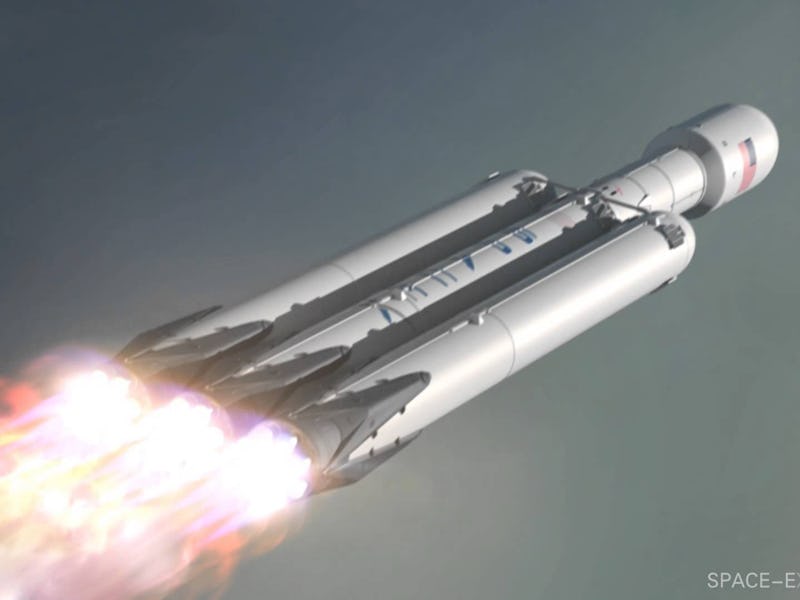Elon Musk is not stopping to take a break. After his Falcon Heavy launched from the Kennedy Space Center on Tuesday, SpaceX put the test flight behind it with a view to starting the process to getting the rocket put to use for commercial flights as scheduled in its mission list.
The Falcon Heavy builds on the lessons learned from the Falcon 9, the reusable rocket used to send satellites into space. The first stage of the Heavy is comprised of three Falcon 9 nine-engine cores, with 27 Merlin engines offering more than 5 million pounds of thrust at the point of liftoff.
Falcon Heavy was designed from the start to carry humans into space. It has the ability to lift 141,000 pounds into space, more than a loaded Boeing 737, meaning it can deliver more than double the payload of the Delta IV Heavy at a third of the price. Only the Saturn V moon rocket has ever delivered a larger payload into orbit.
The company will also now also turn its attention to the BFR — short for “Big” and “Rocket,” with “Falcon” probably the middle word there — with a plan to send humans to Mars with a tentative launch date of 2024. While initially SpaceX’s human-bound space missions were to use the Falcon Heavy, Musk has indicated that success with the much larger BFR could relegate the Heavy to satellite missions more in line with the Falcon 9.
“What we decided internally is to focus our future development on BFR,” Musk told reporters prior to Tuesday’s launch. “Now we’ll see how the BFR development goes. If it ends up taking longer than expected then we’ll return to the idea of sending a crewed Dragon on Falcon Heavy to the moon and potentially doing other things with crew on Falcon Heavy. But right now it looks like BFR development is moving quickly and it will not be necessary to qualify Falcon Heavy for crewed space flight.”
Watch the rocket take off in the video below.
Crewed or otherwise, there’s plenty on the schedule for the Falcon Heavy. Here’s what comes next for the world’s largest rocket.
U.S. Air Force STP-2
The Falcon Heavy will launch the STP-2 mission later this year with multiple payloads on board from the Florida Launch Site. One of these is the Prox-1 satellite. From the Planetary Society blog:
Prox-1 is a Georgia Tech student-built SmallSat sponsored by the Air Force’s University Nanosat Program, or UNP. LightSail 2 and Prox-1 are booked as secondary payloads on the Air Force’s STP-2 mission, which will launch on a SpaceX Falcon Heavy rocket.
ArabSat
This launch will see the Arabsat 6A communications satellite cover the Middle East, North Africa and Europe, with the rocket taking off from the Florida Launch Site. According to a post on the NASA Spaceflight forums, we could see a launch in the third quarter of this year.
ViaSat
This is the launch of a high capacity broadband satellite from Cape Canaveral station, expected to take place around 2020.
Inmarsat I-6
This launch does not yet have a confirmed date, but the SpaceX website lists takeoff as scheduled for the Cape Canaveral station.
Bill Nye predicts the future of Star Wars and Elon Musk.
